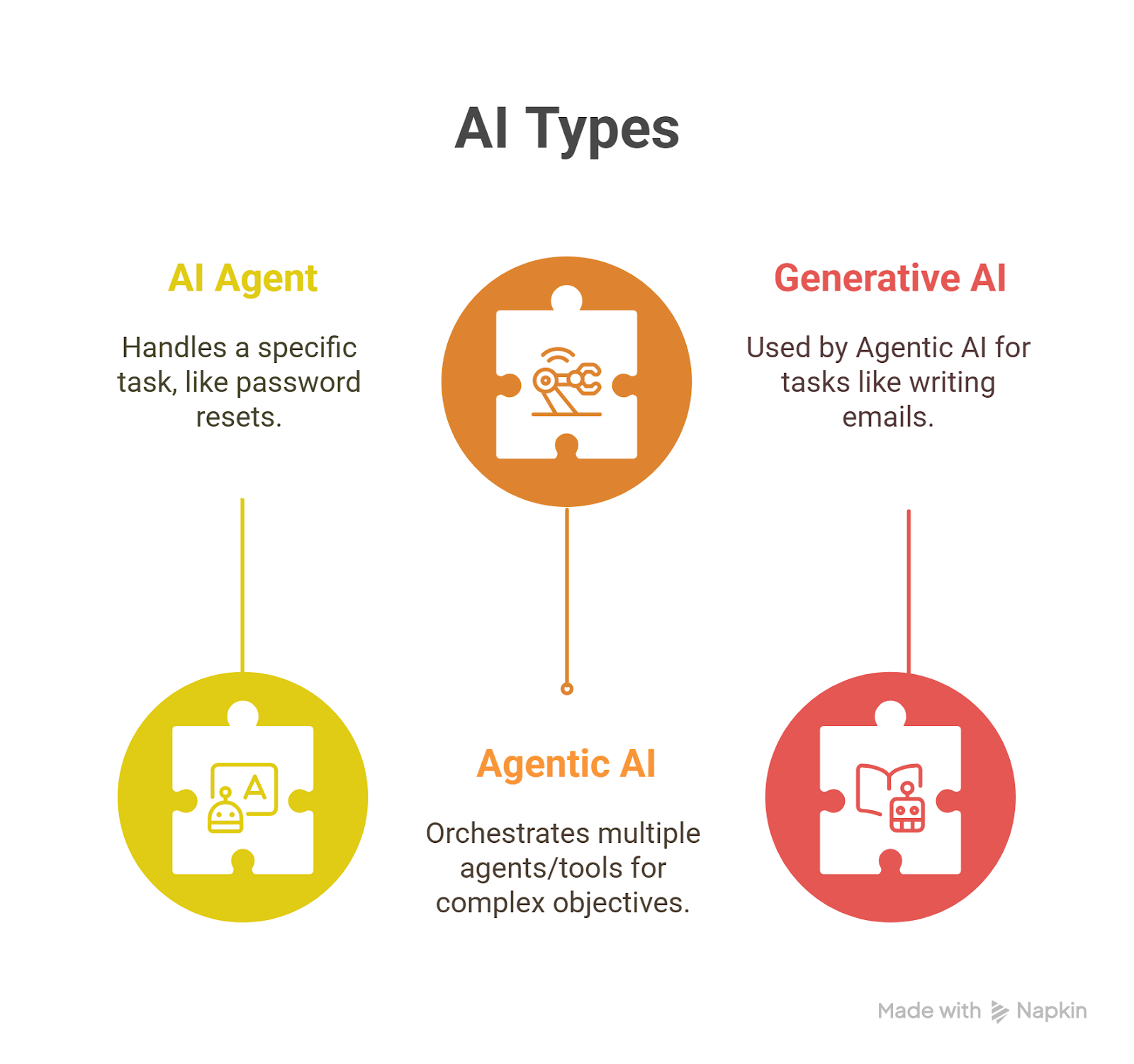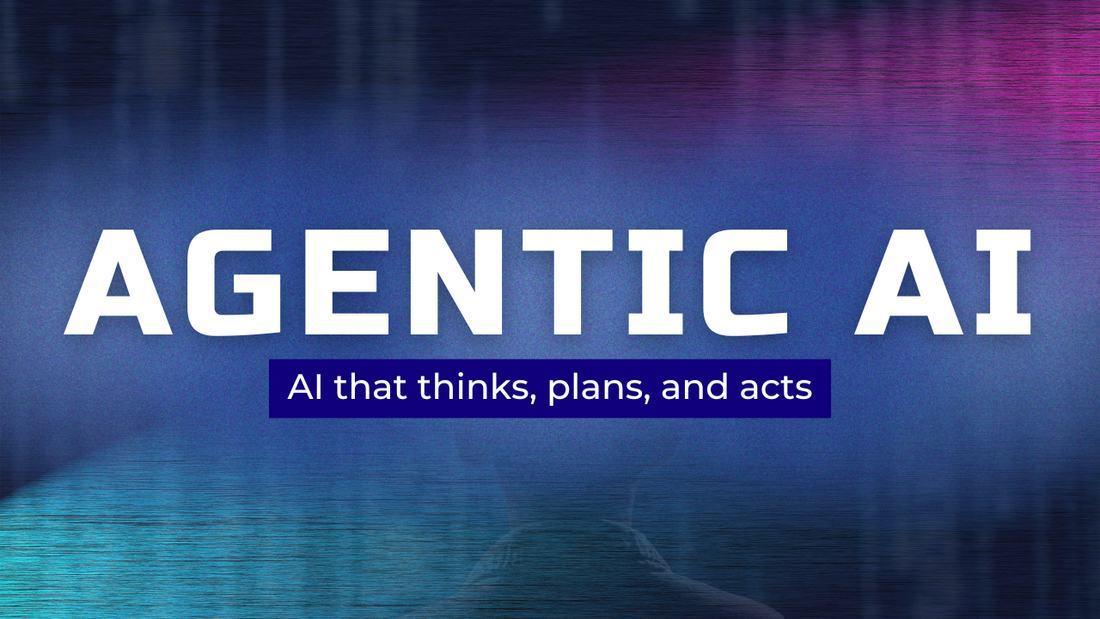Agentic AI is rapidly redefining what’s possible in automation and decision-making. If you’re tired of buzzwords and want a clear, practical understanding of Agentic AI—how it’s different, why it matters, and where it’s heading—read on.
What Is Agentic AI? (And What Isn’t It?)
Agentic AI is a new class of artificial intelligence that goes far beyond chatbots or simple automation. Unlike traditional AI—which is often reactive, responding to prompts or following pre-set rules—Agentic AI can autonomously plan, reason, and execute complex, multi-step tasks to achieve a goal, even as circumstances change.
In simple terms:
Agentic AI doesn’t just answer questions or follow instructions. You give it a goal, and it figures out the steps, makes decisions, uses tools, adapts, and gets the job done—without you micromanaging every move.
How Does Agentic AI Differ from Other AI?
|
Feature |
Retrieval Chatbot (RAG) |
Tool-Augmented Chatbot |
Agentic AI System |
|
Main Function |
Q&A, info retrieval |
Executes simple tool actions |
Plans, reasons, and acts autonomously |
|
Reasoning |
Minimal |
Basic |
Advanced, multi-step |
|
Proactivity |
Reactive |
Reactive |
Proactive, adaptive |
|
Autonomy |
None |
Limited |
High |
|
Example |
HR bot answers leave policy |
HR bot applies for leave |
HR bot prepares entire onboarding |
-
Retrieval Chatbot: Just pulls info from a database or PDF and answers questions. No reasoning, no tool use.
-
Tool-Augmented Chatbot: Can pull info and perform simple actions (like applying for leave), but can’t plan or adapt.
-
Agentic AI: Given a broad goal (like onboarding a new employee), it autonomously plans the steps, uses tools, adapts to changes, and completes the process.
Key Characteristics of Agentic AI
-
Goal-Oriented Planning: Breaks down big objectives into smaller, actionable steps and executes them in sequence.
-
Multi-Step Reasoning: Handles complex workflows, not just single queries.
-
Autonomous Decision-Making: Makes choices and takes actions without step-by-step human guidance.
-
Tool Integration: Connects with APIs, databases, and external systems to get things done.
-
Learning & Adaptation: Learns from outcomes and feedback, improving over time.
-
Memory & Context: Remembers past actions and context, crucial for long tasks or conversations.
Real-World Examples

-
HR Assistant: Given the task to onboard a new employee, it schedules meetings, creates accounts, orders equipment, and sends welcome emails—coordinating across Outlook, HR systems, and IT helpdesk, all without manual intervention.
-
AI Coding Assistant: You ask for a new app; it plans features, writes code, tests, debugs, and iterates until the app works.
-
Travel Planner: You specify a trip with certain weather and budget requirements; it researches, plans, books, and confirms the itinerary using weather and booking APIs.
-
Equity Research Analyst: Compiles a financial report by autonomously gathering data, analyzing trends, and writing summaries using finance and news APIs.
Building Agentic AI: Tools & Frameworks
-
Agno Framework: Let developers quickly build agentic AI systems for complex tasks.
-
Anthropic’s Agent Design Patterns: Offers best practices for building effective, feedback-driven agents.
-
No-Code/Low-Code Platforms: Tools like Zapier and N8N allow non-developers to Orchestrate agentic workflows by connecting multiple services and AI models.
Agentic AI vs. AI Agents vs. Generative AI
|
Aspect |
Generative AI |
AI Agents |
Agentic AI |
|
Main Role |
Content generation |
Task automation |
Goal-driven, multi-step execution |
|
Scope |
Narrow (text, image) |
Single task/focus |
Broad, complex workflows |
|
Autonomy |
None |
Limited |
High |
|
Proactivity |
None |
Reactive |
Proactive, adaptive |
-
AI Agent: Handles a specific task (e.g., resetting a password).
-
Agentic AI: Orchestrates multiple agents/tools to complete complex, dynamic objectives
-
Generative AI: Is a component—Agentic AI often uses generative models for tasks like writing emails or summarizing text, but wraps them in a larger, goal-oriented system
 Why Does Agentic AI Matter?
Why Does Agentic AI Matter?
-
Automation at Scale: Handles complex, cross-functional workflows with minimal human oversight.
-
Real-Time Adaptation: Responds to changing conditions, making it ideal for dynamic environments like supply chain, finance, and cybersecurity.
-
Continuous Improvement: Learns from experience, getting smarter and more efficient over time.
-
Business Impact: Drives efficiency, reduces costs, and unlocks new possibilities for innovation and customer experience.
Conclusion
Agentic AI is the next logical step in AI evolution: from answering questions to autonomously achieving goals. It’s not just hype—it’s already transforming industries by enabling intelligent, adaptive systems that can plan, act, and improve with little human intervention. If your business relies on automation, decision-making, or complex workflows, Agentic AI is the technology to watch—and to start experimenting with today.
Bottom line:
Agentic AI is AI that thinks, plans, and acts—so you don’t have to spell out every step. It’s the future of intelligent automation, and it’s here now.



